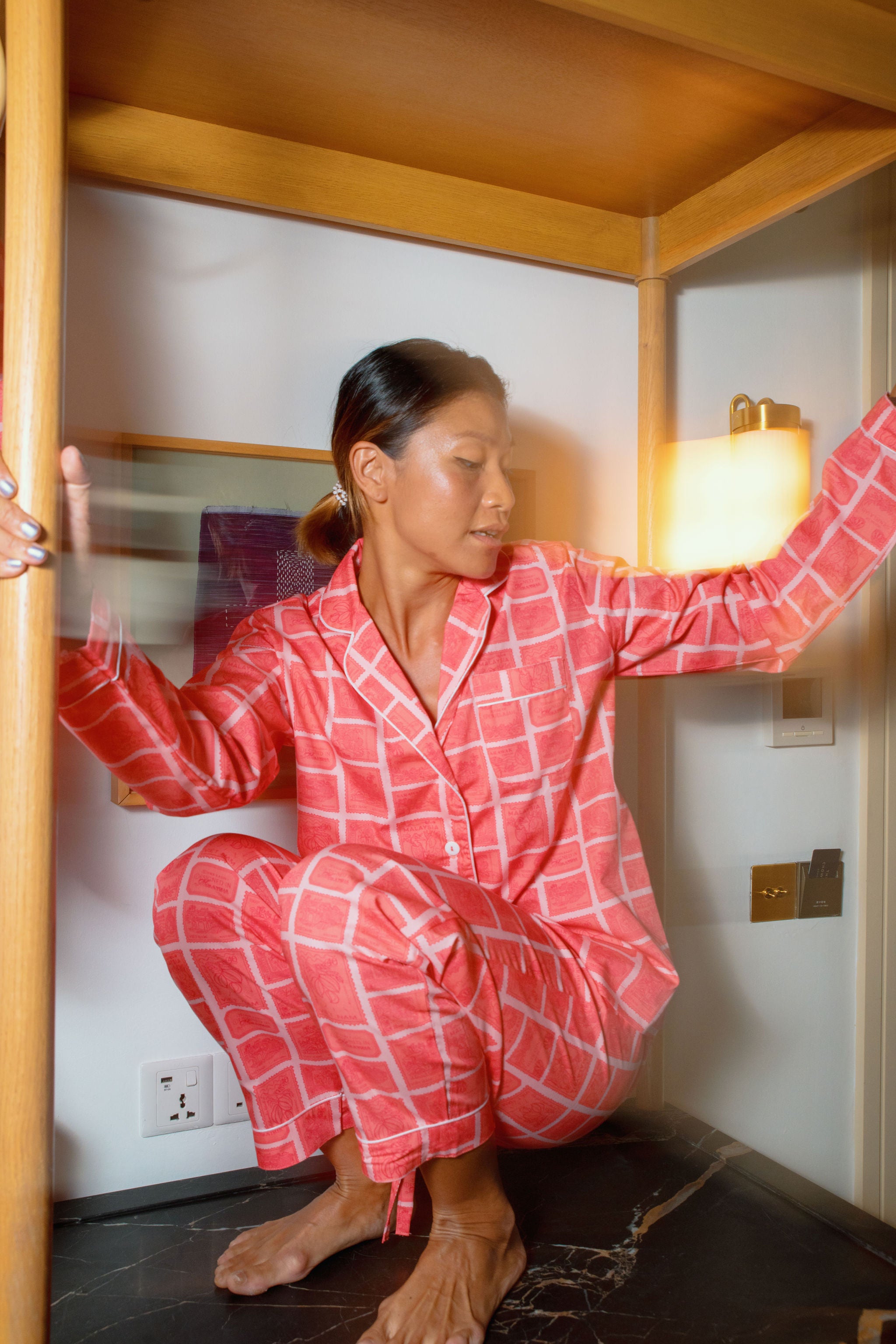Did you know the story of pyjamas, as we know them today, began not in the bedroom, but on the beach? The English word itself, pyjama, derives from pāy-jāma in the Urdu language, which was borrowed from the Persian pāy-jāmeh, meaning “leg garment”.
Originally, these were loose trousers tied at the waist, worn by Indian Muslims and later adopted by British colonialists in the 1800s as lightweight loungewear. At first, pyjamas were exclusively worn by men. That dramatically changed in the 1920s, when fashion-forward women on the French Riviera began strolling through sun-drenched towns in wide-legged palazzo pants and sleek jumpsuits known as beach pyjamas. Juan-les-Pins, playfully nicknamed as “Pyjamapolis,” even hosted chic “Concours de Pyjamas,” where glamorous women competed in their most fashionable beach ensembles—straw hats, printed trousers, and silky tunics included.

Beach pyjamas were more than a fleeting trend; they marked a cultural shift. They embodied freedom, joy, and the spirit of summer, expanding across Europe all the way to the US as a symbol of elegance and rebellion. But before women began wearing pyjamas outdoors, nightwear itself was already evolving. In the early 1920s, women’s nightgowns were still long, cotton, and Victorian in sensibility—pullover styles with simple V-necks, worn sleeveless in summer and long-sleeved in winter.
As tastes modernized, so did fabric and color. Cotton gave way to airy silks, rayon jersey, and satin. Nightgowns grew shorter and more form-fitting, trimmed with floral embroidery, touches of lace, and made in delicate hues like peach, orchid, soft white, and the then-trendy honeydew melon green. Soon, sleepwear designers took another bold step: introducing the one-piece pyjama, essentially a nightgown with legs. These charming creations featured ruffled cuffs at the ankles, buttons from neck to waist, and frog clasps inspired by Asian clothing.


Shortly after, the two-piece pyjama entered the scene—thanks in part to Broadway actress Billie Burke—offering a new silhouette: wide-leg trousers paired with matching tunic tops. These sets quickly became icons of comfort and glamour, made from satin, silk, rayon, or cotton, and often adorned with intricate embroidery around the neckline, cuffs, and pockets. Prints took center stage, with motifs ranging from Egyptian-inspired patterns to tropical flowers, butterflies, dragons, and medallions. Color palettes expanded beyond pastels, embracing rich reds, blacks, and vibrant designs influenced by Asian aesthetics. Much of this embroidery work came from the Philippines or Puerto Rico, blending global craftsmanship with Western trends.
By the late 1920s, pyjamas were no longer confined to the boudoir. Lounge pants—cut straight, soft, and high-waisted—became popular for relaxing or hosting stylish guests at home, often worn with matching tunics in Asian-inspired designs. These coordinated sets weren’t just sleepwear anymore—they were worn as hostess gowns, beach outfits, and even lounging costumes seen at the famed Lido cabaret in Paris. Pyjamas had officially stepped out into the spotlight.
From colonial India to the Côte d’Azur, from cotton nightgowns to silk lounging suits, the history of pyjamas is rich with transformation and cultural exchange. At PANTOUM, we draw inspiration from these glorious days—reviving the elegance, the boldness, and the freedom that pyjamas have always represented. After all, who says comfort can’t be stylish, or that luxury only belongs in the bedroom?


